I am a little addicted to British period drama series. Downton Abbey, Call the Midwife, and Endeavor are a few examples of my favorites. Lately, I’ve been watching the mystery series Poirot now streaming on Amazon Prime Britbox. The production value is of high quality, and the sets and costumes are simply a feast for the eyes. I often I lose the thread of the story because I’m so busy drinking in the details of one exquisite ensemble or another.

In Poirot, wealthy, and often aristocratic Brits traipse all over Europe and Asia poisoning, bludgeoning and stabbing one other while impeccably attired the most gorgeous clothing. For instance, though she’s “working class”, even Miss Lemon (Hercule Poirot’s secretary) is always very smartly appointed.
The ensembles worn by the Poirot characters are beautifully detailed examples of a bygone era. This is fashion from the 1930’s where cotton, silks, linens and wools are beautifully tailored and embellished.
A Blouse Suitable for the Garden
On one episode, during a scene in an English country manor garden, I noticed a female character wearing a light and airy blouse with wide legged trousers – so chic! Inspired, I began picturing the blouse I would wear, should ever find myself in an English garden trying to solve a murder mystery. And then, my little gray cells went to work. Why waste time imagining such a blouse? I’m a Makeling – I’ll just make one!
In truth, I really didn’t need this blouse. Definitely a self-indulgent make… but then, once in awhile it’s fun to make something for no good reason.
The Stash Scores
Of course I had the perfect fabric in my stash. The soft green/gray tone and touch of gold foil is very much in keeping with the post-Depression time period I was inspired by. Moreover, the gently twining leaf pattern is simply aces for my 1930’s “having a spot of tea in the garden while pondering a murder” theme.
I purchased 2.5 meters of this digitally printed “semi-silk” a while back from a resource in India called Akrithi. At the time, I was just juicing my order, trying to make the most of the international shipping fee. For $5/meter I wasn’t expecting much. Once the shipment arrived, I was happily surprised with the quality. To be sure, the fluid drape, hint of luster, and glint of gold on this fabric is simply luxurious. Upon further inquiry, I came to find out that Akrithi’s “semi-silk” is a 90/10 viscose/poly blend.
The Cut and Fit
Back in the 1930’s, women’s fashion had veered away from the straight silhouettes of the Roaring Twenties. Designs of this era feature the return of the waistline and a more feminine fit complete with flounces, frills and detailed necklines. I had a very specific style in mind. My murder mystery inspired blouse needed to have a sweetheart neckline, flutter sleeves and a button front opening. With such a clear vision in mind, I took this opportunity to try the Sewist Mix and Match Sewing Pattern Designer app.
At Sewist.com, I developed a made-to-measure blouse pattern. There are some limitations, but I managed to program in design parameters to come as close as possible to my original concept:
- Garment type and length: hip length, regular armholes, no collar
- Neckline: jewel heart
- Sleeve type and length: flared quarter sleeve
- Dart Placement: at front, french bust darts and fish eye waist darts; at back, shoulder darts and waist darts
- Closure: zip back

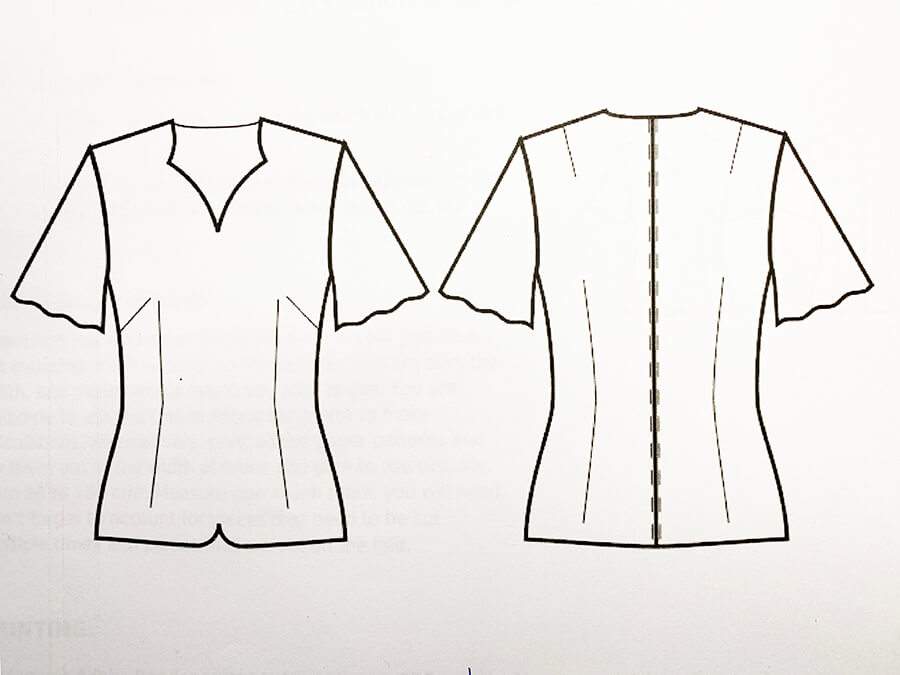
The Concept Takes Shape
Once satisfied with Sewist’s online drawing, I entered my measurements, et voila! Minutes later I downloaded a pattern that looked pretty darn close to my sketch.
The pattern did not come with a ton of instructions, and for this reason I wouldn’t recommend Sewist for beginners. Since this was my first foray with Sewist, I whipped up a quick test muslin from an old bedsheet to check the fit. Boy oh boy, if it wasn’t just spot on. Not bad for $2.99! Using the pattern as a base, I made these revisions to be more in keeping with my original concept:
- Add a godet to each side seam for a little more flouce at the hem
- Eliminate the back zipper and cut the back as a single piece
- Lengthen the front facing to support a long slitted front button opening
- Pre-interfaced fabric prior to cutting the neck facings, to ensure maintaining the shape
- Used iron on stay tape at neckline, and shoulder seams
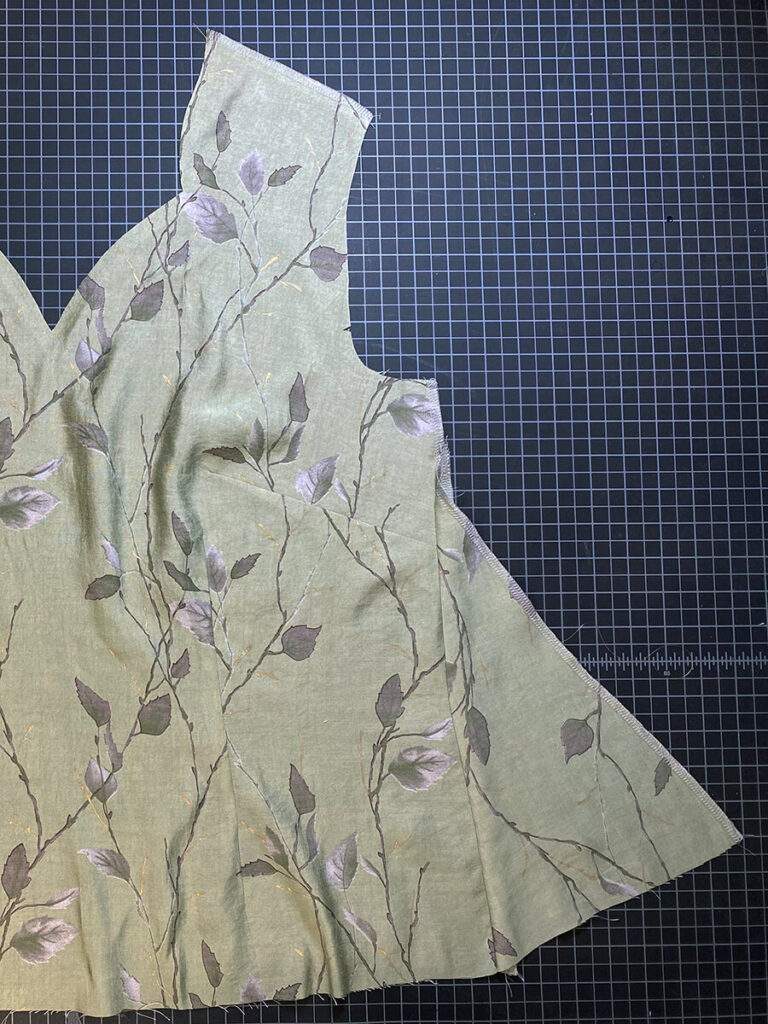
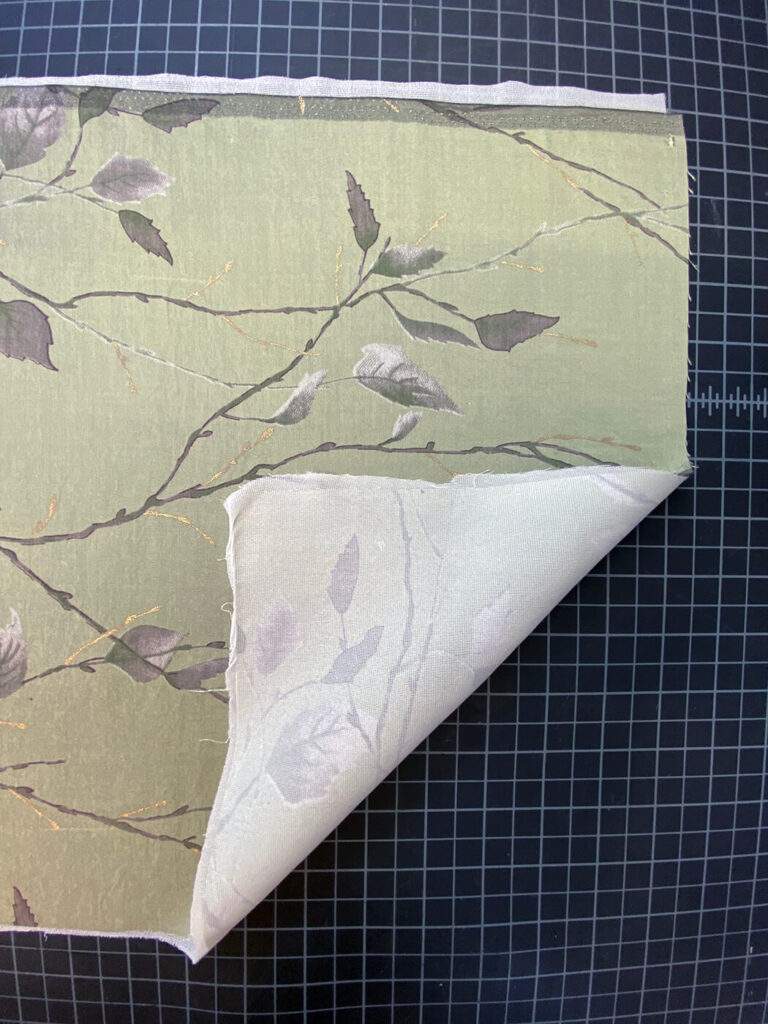
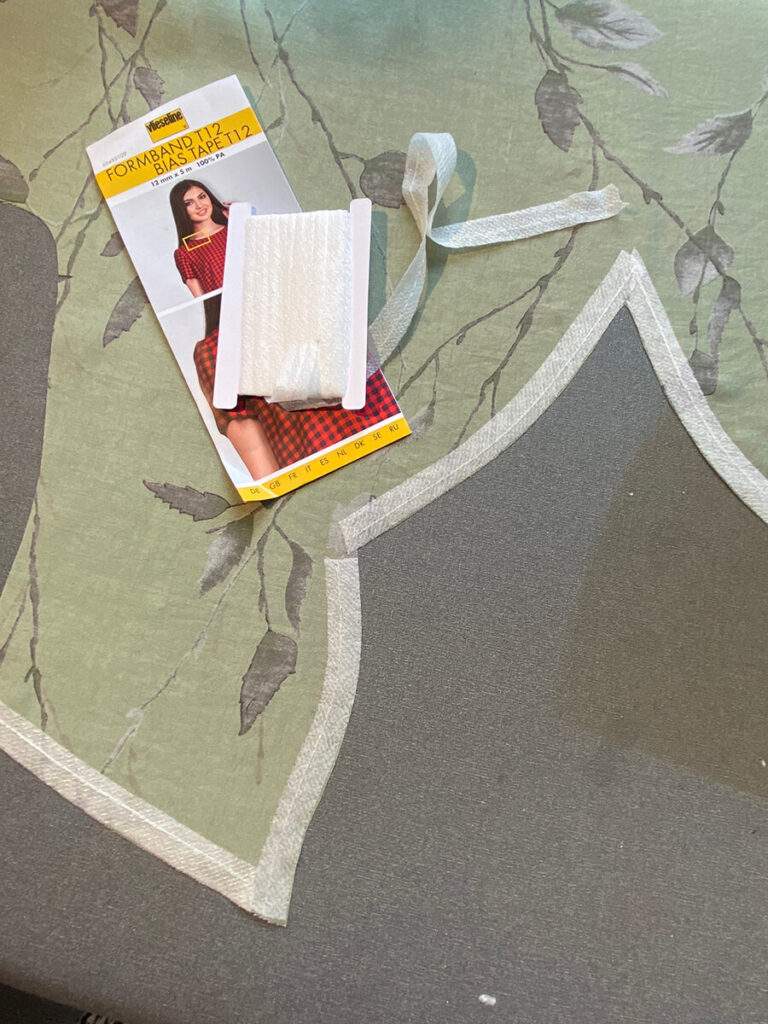
Elegant Details
A 1930s blouse often features fine fabric embellishment techniques. Pintucks, embroidery, lace appliques, special edge treatments and trims are all common to this era. Since construction of the blouse itself was straightforward, I decided to add an embellishment to highlight the lovely flutter sleeves. See my post titled Make it Special with a Beaded Picot Edge Finish for complete detail on the technique and materials used to create this embellishment.
To tie into the beaded picot edge finish, I used #100 gold silk thread to topstitch the facings around the neckline and the narrow bottom hem. The button loops were hand sewn of a 2-ply twisted silk Au Ver A Soie Perlee thread in a silvery gray to blend in with the twining gray leaf pattern. Six 1/2″ brass domed shank buttons were used to play off the gold foil glints in the fabric print.
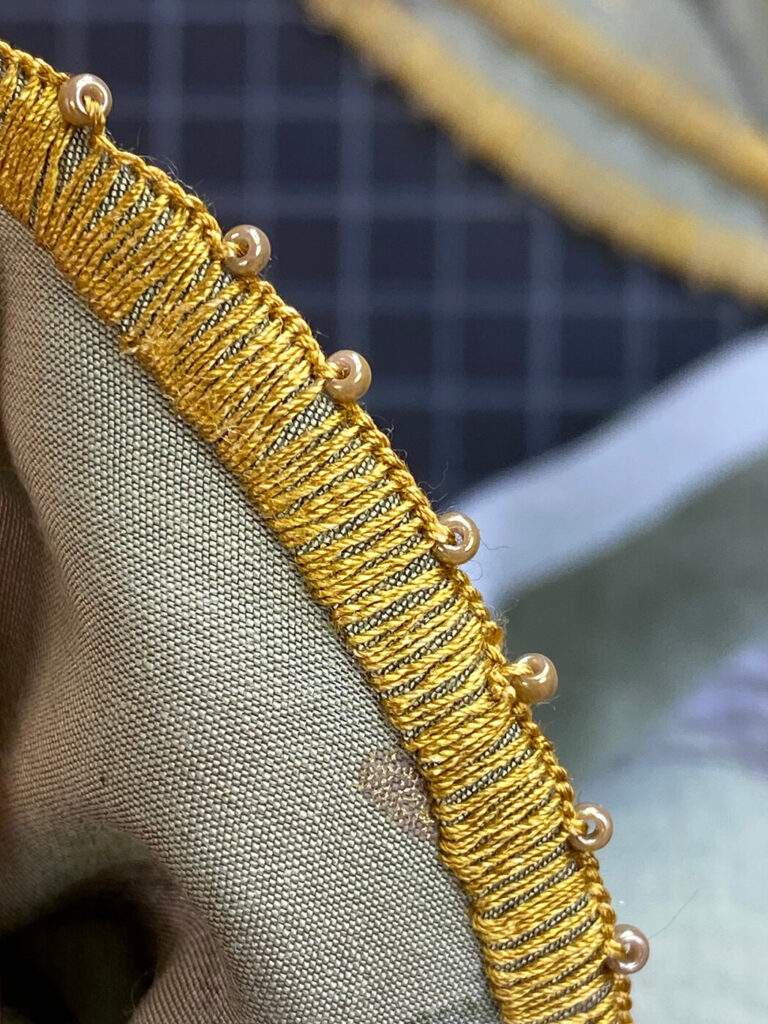
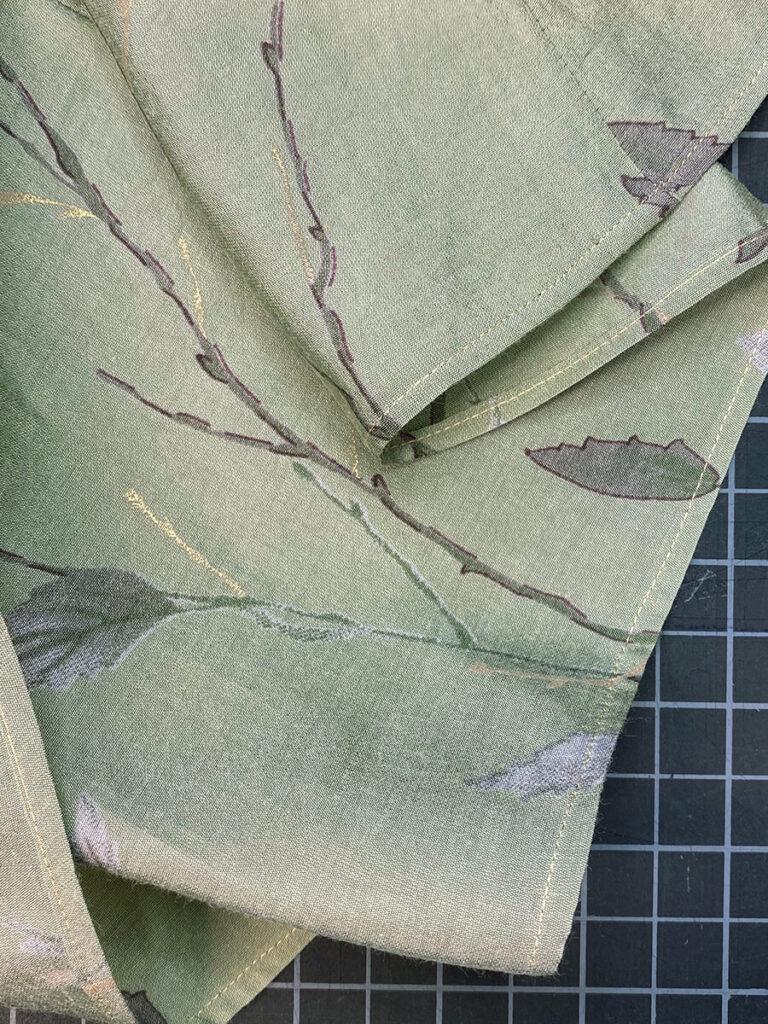

Me made, me happy.
Thinking through the process and details of this make was just plain fun. It always feels good be happy at the end of a make. I will say, I won’t be waiting to solve a murder mystery in an English garden to wear this blouse. My own garden will do just fine.



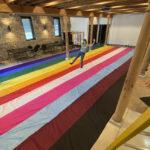

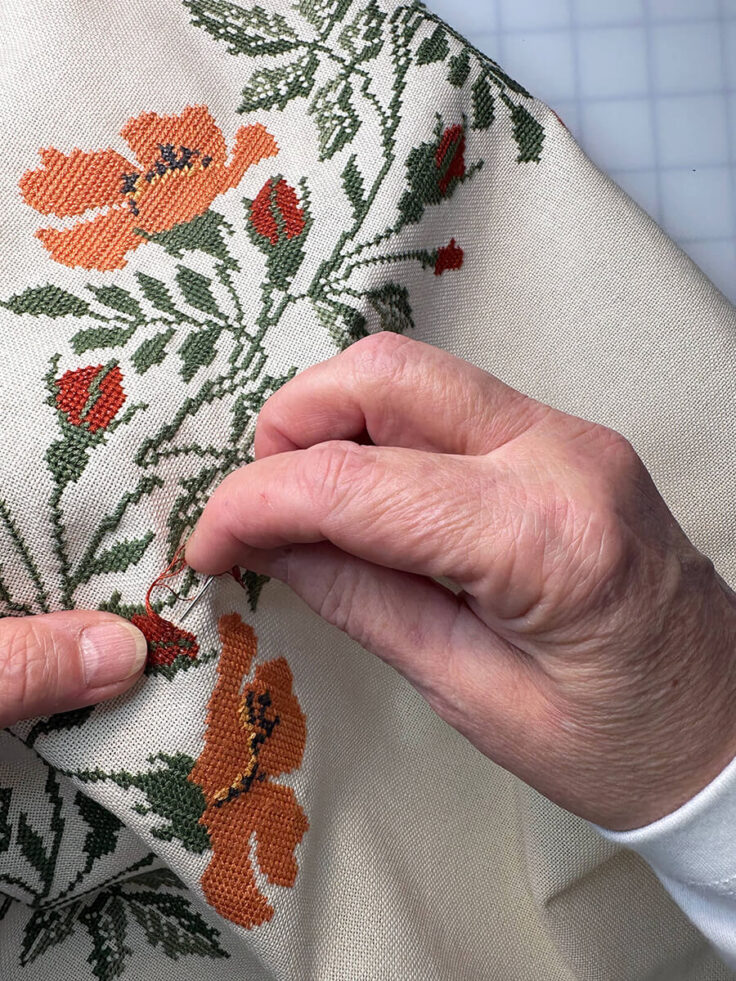 How to Make a Vyshyvanka Blouse — Ukrainian Embroidery Techniques
How to Make a Vyshyvanka Blouse — Ukrainian Embroidery Techniques 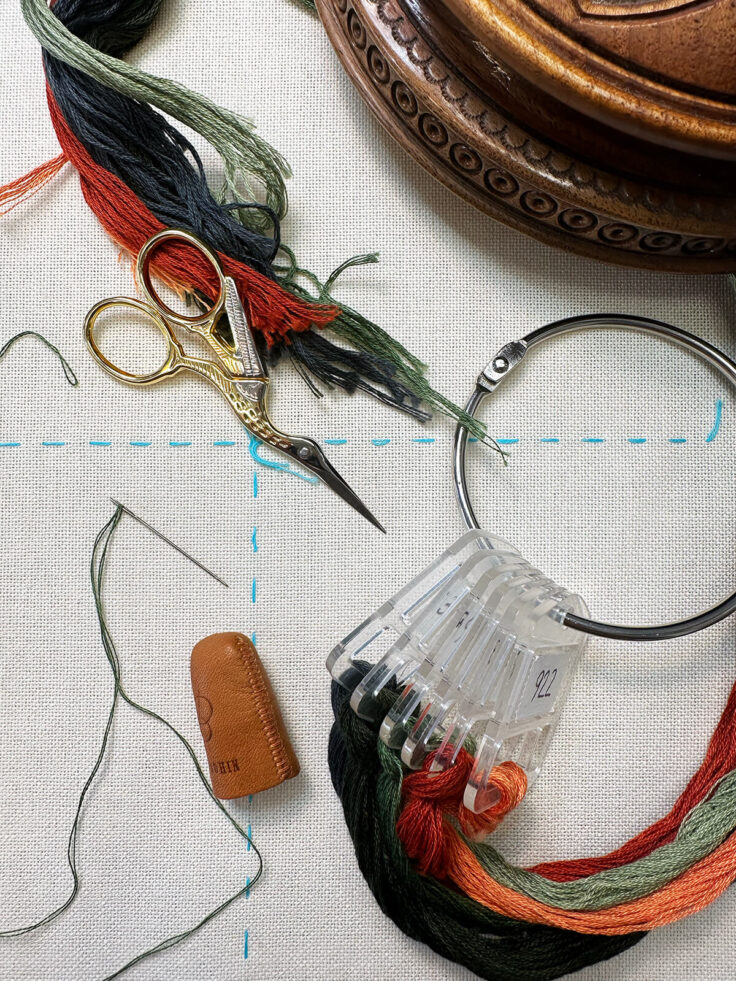 How to Make a Vyshyvanka Blouse – Ukrainian Embroidery Prep
How to Make a Vyshyvanka Blouse – Ukrainian Embroidery Prep  A Boho Silk Kimono Welcome
A Boho Silk Kimono Welcome
Leave a Reply